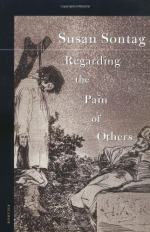
|
| Name: _________________________ | Period: ___________________ |
This quiz consists of 5 multiple choice and 5 short answer questions through Chapter 4.
Multiple Choice Questions
1. At the end of World War II, a group of journalists formed Magnum Photo Agency. Which of the following photographers was not among them?
(a) David Seymour.
(b) Robert Capa.
(c) Henri Cartier-Bresson.
(d) Ernst Friedrich.
2. To whom did the "Here Is New York" exhibit donate the proceeds?
(a) A fund benefitting children who lost parents in the attack.
(b) A fund benefitting the spouses of those who died.
(c) A fund benefitting the arts and encouraging photography of New York.
(d) A fund benefitting the fire departments that acted to save the victims.
3. Which of the following was NOT true of the "Here Is New York" exhibit?
(a) One image from each contributer was selected.
(b) The identity of the photographer was kept secret until after the image was purchased.
(c) The images were displayed uncaptioned.
(d) Images were selected on a first-come, first-serve basis.
4. Sontag discusses reactions to the attacks on the World Trade Center on September 11, 2001. Which of the following is NOT a reaction Sontag recalls hearing?
(a) "It felt unreal."
(b) "It felt like a dream."
(c) "It felt like a movie."
(d) "It felt surreal."
5. According to Sontag, "to photograph is to frame, and to frame is to _______".
(a) Include.
(b) Alter.
(c) Exclude.
(d) Highlight.
Short Answer Questions
1. Which Virginia Woolf book does Sontag discuss in detail?
2. Sontag lists many effects of photographs depicting war victims. Which of the following was not one of the effects she lists?
3. Fenton received directions from the War Office to do which of the following?
4. Sontag discusses a famous series of photographs taken by Tyler Hicks, titled "A Nation Challenged." What does this series depict?
5. Photographic representations of the Vietnam War was essential to promoting:
|
This section contains 332 words (approx. 2 pages at 300 words per page) |

|




